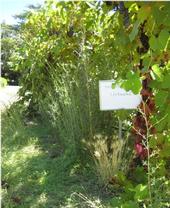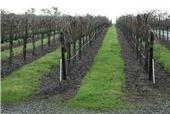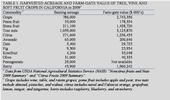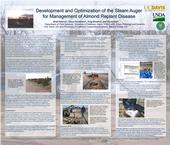- Author: Brad Hanson

Today I thought I would post a brief writeup and a poster presentation by Amit Jhala, a recent postdoctoral researcher in the UCD weed group. Amit and I put out two small experiments in the spring of 2010 to evaluate combinations of glyphosate (Roundup WeatherMax) plus various residual herbicides in a walnut orchard near Davis and a vineyard near Winters, CA.
All treatments included 2 lb ae/A glyphosate The residual materials included:
- penoxsulam (to be registered alone as "Tangent" and is one of the active ingredients in "Pindar GT")
- indazaflam (to be registered as...
- Author: Brad Hanson

Reposted from a paper presented at the 59th annual Lodi Grape Day (February 1, 2011).
Brad Hanson, Cooperative Extension Weed Specialist, UC Davis
What makes a weed a weed? Better yet, what makes a weed a "tough weed"? Or even better still, what makes a tough weed tough to control? Confused yet?
One definition of agricultural weeds that I like is "a plant that is especially successful at colonizing and proliferating in disturbed, but potentially productive areas". Most vineyards fall into the category of "disturbed, but productive"...
- Author: Brad Hanson

A few months ago I compiled some statistics on the acreage and value of tree and vine crops in California and put together a simple map of where the main production areas are located. One caveat to this map is that I only had access to land use data layers for the Central Valley counties and some Bay area and Central Coast areas. Therefore, this map does not show orchards and vineyards in Southern California or the Desert growing regions which are very important for some crops in the chart below the map.
These crops all fall under the label of "specialty crops" although some of them have fairly substantial acreage. One of the things I found most interesting in looking at these data compared to a few years ago is the...
- Author: Brad Hanson

Happy New Year!
Today I thought I'd attach a poster presentation from the recent 38th Annual Almond Industry Conference. The attached poster has some information on an ongoing research project in which we are testing thermal disinfestation as an alternative to soil fumigation for management of almond replant disease.
This is not especially a weed research project but has become an interesting area of research because of the high economic and environmental costs of soil fumigation. In second and later generation, trees can be affected by a variety of soil pests including fungal and bacterial pathogens, parasitic nematodes, and other yet-to-be-identified pests that can reduce orchard establishment and early...
- Author: Brad Hanson
This is one part follow up to my previous post on glyphosate resistance and one part test of a tool to imbed articles in the blog.
The above frame has a 2008 report that Anil Shrestha, Kurt Hembree, and I wrote for California Agriculture on our glyphosate-resistant hairy fleabane work. You can click on it to open it in a full-screen reading pane.
I like this document hosting interface and may use it again. If you have problems viewing it in a particular browser, please let me know.
The article can also be downloaded here
Brad


